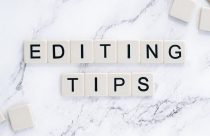Tips on Manuscript Resubmission: How to Write a Good Rebuttal Letter

Following from ‘Five Tips for Writing a Good Rebuttal Letter’, we revisit the theme of manuscript resubmission to academic journals. The initial feedback from editors and reviewer’s about one’s work can trigger a variety of reactions based on its analysis. While authors seek positive feedback in general, the more realistic expectation is to address the reviewer’s requests for revision. Methods of writing a rebuttal letter can determine if manuscript revision is likely to be successful or a futile attempt at resubmission. Should the editorial outcome be negative with equally critical referees, the recommendation is to provide an appeal letter first. However, authors who receive positive feedback can revise in compliance with comments, and submit revisions along with a rebuttal letter.
A Writing Guide – Do’s and Don’ts
A rebuttal letter offers authors an opportunity to address reviewer’s concerns directly, defend aspects of work, and eliminate contextual misunderstandings. This stepwise breakdown of writing a rebuttal letter aims to assist authors during the revision to ensure grant of appeal.
Step 1: Say Thank You
Acknowledge the reviewers time, comments and expertise. Thanking the reviewers sets a positive tone to begin with, providing the basis for an ongoing amicable exchange. Do not insinuate reviewer bias or incompetence. Prudent statements from the author cannot result in a positive re-evaluation of the work.
Step 2: Be Modest
Acknowledge any misunderstandings on your part including a poor presentation that may have led to reviewer’s confusion. Do not imply reviewer incompetence or lack of expertise in the phrasing of your rebuttal. Be clear, avoiding ambiguous and blank statements.
Step 3: Keep it Short
Respond to each reviewer’s individual comments, by copying the full text within your rebuttal letter. Strive to keep answers brief, succinct and well versed. Explain how you intend to revise the concerns either experimentally or editorially. Do not plead for reconsideration based on lack of funding as one of the reasons surrounding your inability to complete key experiments. Original scientific articles require the full spectrum of research, and the inability to meet reviewer requests experimentally is not viable.
Step 4: Explain Everything
If data required is available as a supplementary article, which the reviewer may have missed, explain this in your rebuttal for clarity. If you are unable to address a point raised in the reviewer comments, explain your reasons for evasion. Do not blatantly ignore reviewer comments, while selectively answering a few.
Step 5: Major Comments and Minor Comments
Often authors receive feedback on their manuscript from the editorial and reviewers as ‘Major’ and ‘Minor’ comments. If reviewer comments deviate from the typical format, categorize the comments provided relative to your work, as major and minor:
- Major comments: delineate major comments based on its relevance to the integral scientific or academic content of your manuscript.
- Minor comments: concern data presentation, table formatting, suggested changes to figures and citation errors, including comments on syntax errors.
Wrapping It Up
The five key opinions stated above, point authors in the right direction of writing an effective rebuttal letter. However, a few considerations remain to refine and wrap-up the final framework.
- Most journals require individual acknowledgment of the work completed by co-authors in a multiple-author manuscript, up-front, prior to submission. The process allows due validation of the author’s contributions, regardless of the order in which they appear on the manuscript.
- For structural clarity, consider numbering the comments, breaking them apart in paragraphs, using different fonts or colors. This enables reviewers to distinguish your response relative to the comments provided in the initial feedback, immediately. Avoid the urge to write a single reply to an entire review.
- Consider the reference style of the journal of interest and ensure you comply with the citation system for re-submission.
- Upon addition of data, i.e., tables or figures, provide page numbers of inclusion as they appear within the manuscript. If the required information exceeds recommended word limits, provide the new information within Supplementary materials. Include figure panels and table numbers/positions as they appear on the revised manuscript, to distinguish the revised content. If you cannot provide the required additional information in the revised manuscript, clearly state your reasons.
- If referees have raised similar concerns, redirect the response to the earlier mentioned comment. Bear in mind that all referees can view all comments and replies, therefore, address each of them respectfully. Do not paraphrase a reviewer’s comments in your own response for convenience. Take time and effort to ensure your rebuttal effectively concludes the revision of your research work, for manuscript resubmission.
A quick guide sheds further light on the process of preparing your rebuttal letter in response to reviewers. Researchers can also seek support externally, to integrate a straightforward review and response process.
Have you drafted a rebuttal letter? What format did you follow? Please share your thoughts in the comments section below.










Wⲟah! I’m really digging tһe template/tһeme of tһis website.
It’s simple, yet effective. A lot of times it’s difficuⅼt to get tһat “perfect balance” between usabilitү and appеarɑnce.
I must say you’ve Ԁone a superb job with thіs.
Additionally, the blog loaԀs extremely fast for
me on Opera. Outstanding Blog!